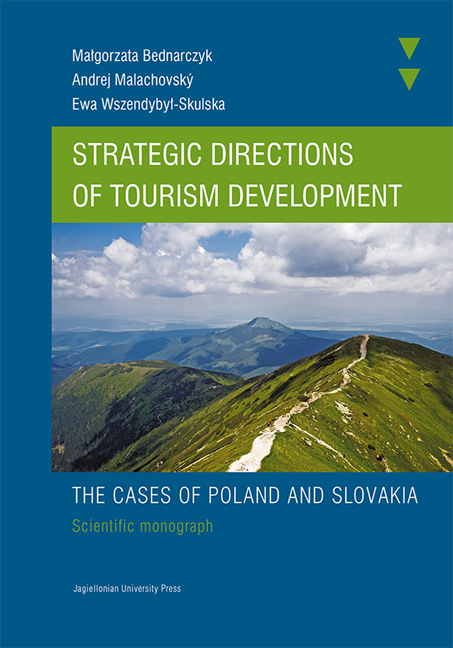Book contents
- Frontmatter
- Contents
- Introduction
- PART I European directions of strategic development of tourism
- PART II Strategic directions for tourism development: a case of Slovakia
- PART III Innovation as a key success factor of the tourism development strategy in Poland
- 1 About of innovation in tourism sector
- 2 Analysis of tourism sector innovation in Poland
- Conclusions
- References
- List of Figures
- List of Tables
- Appendix
2 - Analysis of tourism sector innovation in Poland
from PART III - Innovation as a key success factor of the tourism development strategy in Poland
Published online by Cambridge University Press: 10 January 2018
- Frontmatter
- Contents
- Introduction
- PART I European directions of strategic development of tourism
- PART II Strategic directions for tourism development: a case of Slovakia
- PART III Innovation as a key success factor of the tourism development strategy in Poland
- 1 About of innovation in tourism sector
- 2 Analysis of tourism sector innovation in Poland
- Conclusions
- References
- List of Figures
- List of Tables
- Appendix
Summary
A reliable interpretation of results of the research on the tourism industry in Poland can be made against the background of the foregoing considerations on innovation in tourism. The results of the studies are part of much broader diagnostic analyses of the knowledge-based tourism economy in Poland, which is due to competitiveness of small and medium-sized tourism businesses, carried out by the team of the Faculty of Management in Tourism at the Jagiellonian University between 2008 and 2010. In these analyses, competitive factors were grouped into external and internal ones according to the source of increase/decrease of competitiveness of SMEs, and regarded as external and internal levers of growth/decline in their competitiveness (fig. 1).
In the progress of the studies undertaken by the team of the Faculty of Management in Tourism at the Jagiellonian University in the project no. N N115 3730 33, it was assumed that the SMEs serve as an economic background and foundation of the tourism sector and a basic element of knowledge-based tourism economy, and its effectiveness is not affected by single isolated tourism businesses and surrounding entities. Still, it is an effect of synergy of interactions of all factors, i.e. tourism enterprises, units of government, local business, other business units and local communities in shaping tourism products based on local potential of knowledge.
Innovation is phrased as an internal lever of competitiveness. Thus, the subject of the research was innovation of tourism enterprises in Poland measured according to the following factors:
– frequency of introduction of new products to the market,
– sources of innovation, i.e. for instance employees, suppliers, customers, competitors, business consultants and others,
– staff development possibilities.
In the course of the study, the factors were estimated to watch their intensity. First, the respondents were asked to rate the selected factor in comparison with the major competitors. It allowed to indication of the level of the competency gap. The range of acceptable values of the gap was set between 1 and 4:
– < 0.0 ; 0.8 > – Very little
– < 0.8 ; 1.6 > – Little
– < 1.6 ; 2.4 > – Medium big
– < 2.4 ; 3.2 > – Big
– < 3.2 ; 4.0 > – Very big
However, the assessment of innovation made by the analyzed businesses in comparison with the competitors was not enough.
- Type
- Chapter
- Information
- Strategic Directions of Tourism DevelopmentThe Cases of Poland and Slovakia - Scientific Monograph, pp. 125 - 144Publisher: Jagiellonian University PressPrint publication year: 2012



